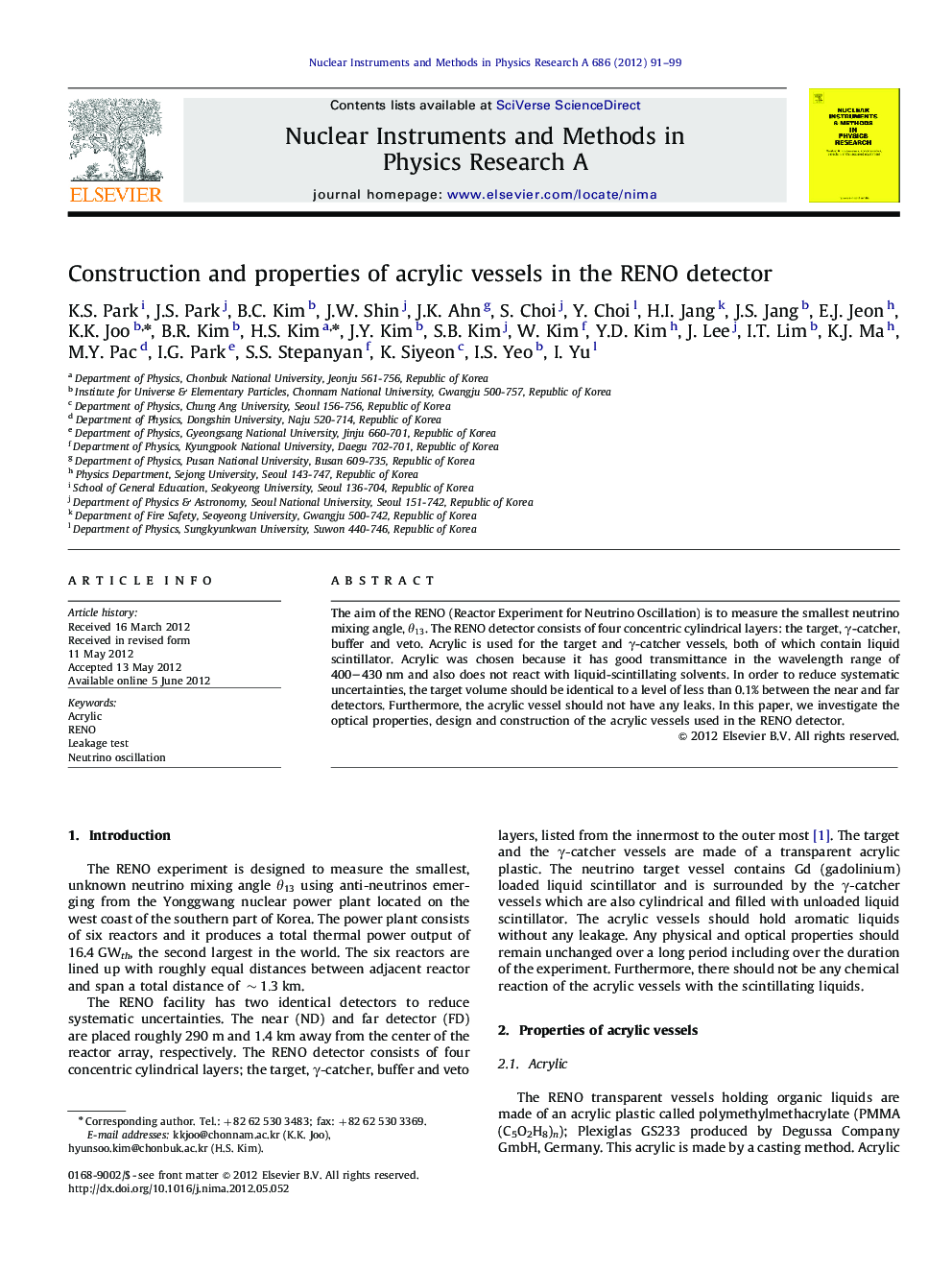| Article ID | Journal | Published Year | Pages | File Type |
|---|---|---|---|---|
| 1823586 | Nuclear Instruments and Methods in Physics Research Section A: Accelerators, Spectrometers, Detectors and Associated Equipment | 2012 | 9 Pages |
The aim of the RENO (Reactor Experiment for Neutrino Oscillation) is to measure the smallest neutrino mixing angle, θ13θ13. The RENO detector consists of four concentric cylindrical layers: the target, γ-catcherγ-catcher, buffer and veto. Acrylic is used for the target and γ-catcherγ-catcher vessels, both of which contain liquid scintillator. Acrylic was chosen because it has good transmittance in the wavelength range of 400–430nm and also does not react with liquid-scintillating solvents. In order to reduce systematic uncertainties, the target volume should be identical to a level of less than 0.1% between the near and far detectors. Furthermore, the acrylic vessel should not have any leaks. In this paper, we investigate the optical properties, design and construction of the acrylic vessels used in the RENO detector.
